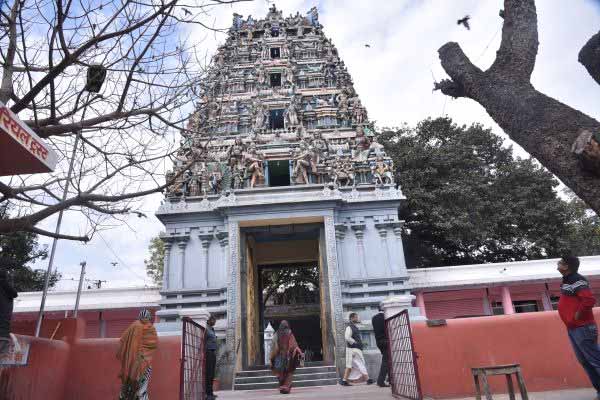Jharkhand Mahadev Temple in Jaipur is a revered shrine dedicated to Lord Shiva. Nestled in a tranquil setting, the temple is a peaceful haven for devotees and visitors. It boasts traditional Rajasthani architecture, featuring intricate carvings and exquisite craftsmanship that reflect the region’s rich cultural heritage.
This temple is particularly bustling during major Hindu festivals, especially Maha Shivaratri, when devotees gather to offer prayers and participate in special rituals. The serene ambiance of the temple makes it an ideal spot for meditation and spiritual reflection.
Easily accessible by local transport, the Jharkhand Mahadev Temple can be reached by hiring a taxi or auto-rickshaw from various parts of Jaipur. Visitors are advised to wear modest attire to respect the religious sentiments of the devotees. Early mornings or late evenings are the best times to visit, allowing one to avoid the daytime heat and crowds. While photography policies may vary, it is best to check with the temple authorities beforehand. The temple’s serene environment and architectural beauty make it a must-visit spot in Jaipur.

History of Jharkhand Mahadev Temple Jaipur
The Jharkhand Mahadev Temple in Jaipur is a significant religious site dedicated to Lord Shiva, revered by devotees for its spiritual ambiance and historical importance. The temple’s origins are deeply rooted in the local legends and cultural traditions of Rajasthan.
According to local lore, the temple was established centuries ago by a devout follower of Lord Shiva who had a profound vision of the deity in the dense forests (jharkhand) that once surrounded the area. This vision led to the construction of a shrine to honor the divine presence. Over time, the temple evolved, attracting devotees from near and far, and became an integral part of Jaipur’s religious landscape.
Architecturally, the Jharkhand Mahadev Temple reflects the quintessential style of Rajasthani temple construction, with its intricate carvings, ornate pillars, and beautifully sculpted idols. The temple’s sanctum sanctorum houses a revered Shiva Lingam, which is the focal point of worship. The surrounding structures and courtyards are adorned with depictions of various deities and mythological scenes, adding to the temple’s spiritual aura.
The temple has witnessed various phases of renovation and restoration, ensuring that its historical essence is preserved while accommodating the growing number of devotees. It plays a crucial role during major Hindu festivals, particularly Maha Shivaratri, when the temple becomes a hub of religious activities, drawing large crowds for special rituals and ceremonies.
The Jharkhand Mahadev Temple’s rich history and cultural significance make it a vital part of Jaipur’s heritage. Its enduring legacy continues to inspire and attract those seeking spiritual solace and a connection to the divine. This temple not only serves as a place of worship but also stands as a testament to the enduring faith and devotion of its followers.
How to Reach Jharkhand Mahadev Temple Jaipur
The Jharkhand Mahadev Temple in Jaipur is easily accessible by various modes of transportation. Located within the city, here are the ways to reach the temple:
By Car/Taxi: Hiring a taxi or driving your own vehicle is one of the most convenient ways to reach the temple. Jaipur has well-maintained roads, and the temple is accessible from different parts of the city.
By Auto-Rickshaw: Auto-rickshaws are a popular mode of transport in Jaipur and can take you directly to the temple. Negotiate the fare before starting the journey.
By Public Bus: Jaipur has a decent public bus network, and you can find buses heading towards the temple area. Ask for buses going towards your destination at the nearest bus stop.
By Walking: Depending on where you are staying in Jaipur, the temple might be within walking distance. Check the map and plan your route accordingly.
The temple is located in a serene environment, offering a peaceful retreat from the bustling city. It’s advisable to visit early in the morning or late in the evening to avoid the heat and crowds, especially during festivals or weekends.